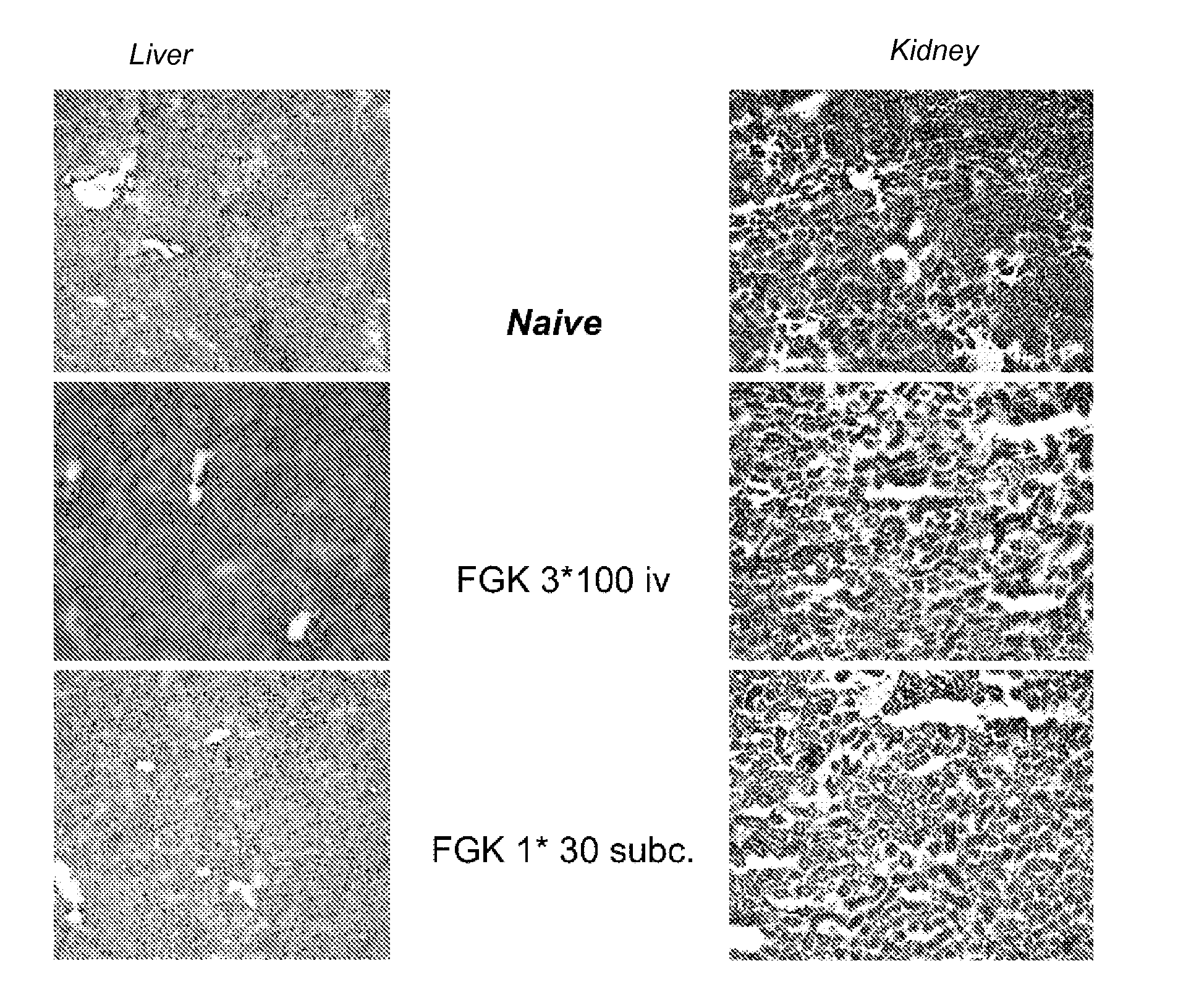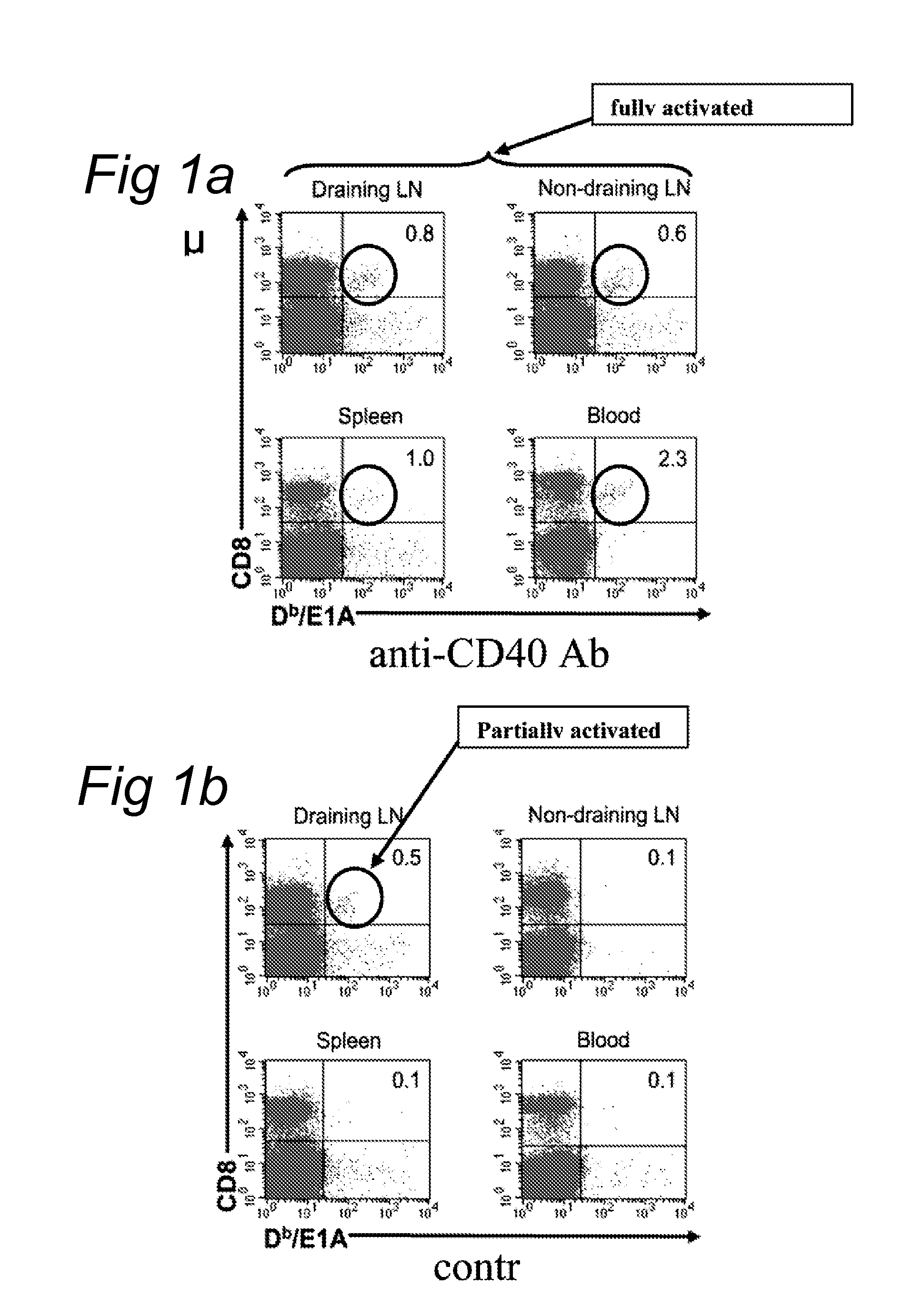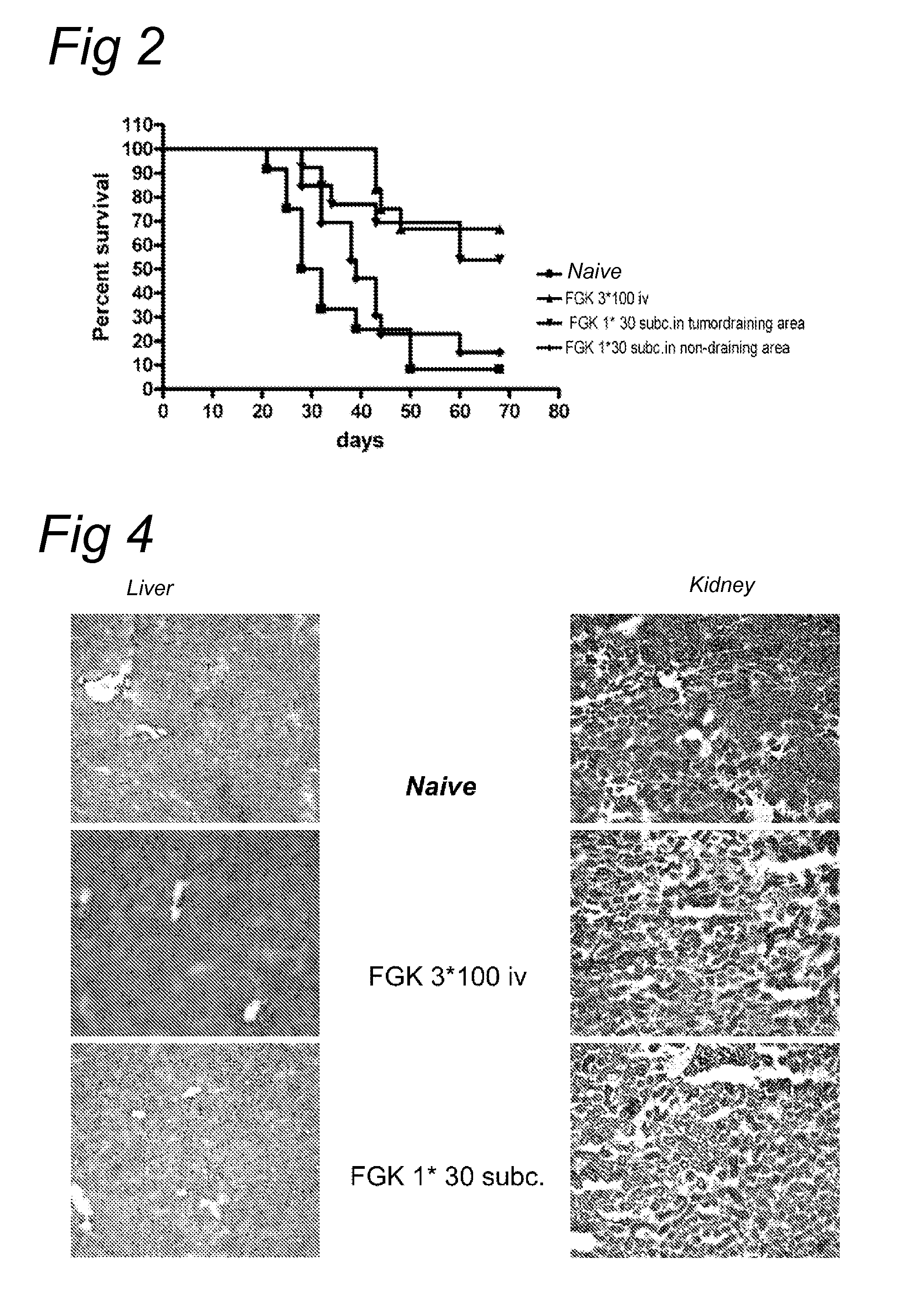Delivery of a cd40 agonist to a tumor draining lymph node of a subject
- Summary
- Abstract
- Description
- Claims
- Application Information
AI Technical Summary
Benefits of technology
Problems solved by technology
Method used
Image
Examples
example 1
[0103]Low dose anti-CD40 activating therapy in the tumor-draining area is as effective in generating an anti-tumor CTL response as a high dose systemic therapy, with decreased toxicity.
[0104]In a mouse-model using adenovirus E1-induced tumor-cells a weak tumor specific CTL response is generated. These CTL persist in the tumor-draining lymph node and are not capable of clearing the tumor. The tumor specific CD8 T-cells are primed by dendritic cells (DC) presenting tumor-antigens in the tumor-draining lymph node. These DC are not activated due to lack of danger signals, such as those delivered to toll-like receptors (TLR, G. J. van Mierlo, et al. J. Immunol. 173, 6753-6759, 2004). By systemically injecting activating anti-CD40 antibodies, the dendritic cells are activated and stimulate the CTL. The tumor specific CTL start proliferating, leave the tumor-draining lymph node and clear the tumor (Van Mierlo et al. (2002) Proc Natl Acad Sci USA 99, 5561; G. J van Mierlo, et al. J. Immunol...
example 2
[0119]Tumor experiment with higher dose anti-CD40 antibody in the tumor draining area (FIG. 5).
[0120]We determined whether it is possible to increase the dose of the anti-CD40 antibody locally, while maintaining the functional effect as measured by tumor clearance and a reduced toxicity. An increased dose, namely 150 μg of FGK-45 was administered s.c. in the tumor draining area or in the flank opposite of the tumor (non-draining area). Survival was compared with mice injected i.v. with 3 times 100 μg of FGK. Interestingly, no difference in survival between the treated mice could be observed when a high dose of FGK was injected. In contrast (see FIG. 2) to the low dose FGK (30 μg in Montanide) where it did matter if the antibody was injected in the tumor draining area or not. This demonstrates that even though the injection is local (s.c.) in a non draining area, a high dose of the antibody ensures that sufficient amounts of antibody reach the periphery through systemic distribution....
example 3
[0122]Tetramer staining on blood samples of mice with a subcutaneous tumor (FIGS. 6 and 8).
[0123]Blood samples were obtained at day 9 (FIG. 6) or day 11 (FIG. 8) after start of anti-CD40 treatment. The number of tumor-specific CTL were compared between untreated or treated tumor bearing mice. Treated mice received either a high dose anti-CD40 antibody (FGK-45) intravenously (3 times 100 μg) or a low dose subcutaneously (30 g in Montanide) in the tumor draining area or in the contralateral flank (non-draining area). No increase in tetramer positive CD8 T-cells could be detected in the blood of mice treated with anti-CD40 s.c. in the contralateral flank (non-draining area) compared to untreated mice. Importantly, in mice that received systemic anti-CD40 treatment or mice that had received anti-CD40 s.c. in the tumor draining area, clear populations of tetramer positive CD8 T-cells could be demonstrated. This proves that even though the subcutaneous treatment with low dose anti-CD40 is...
PUM
| Property | Measurement | Unit |
|---|---|---|
| time | aaaaa | aaaaa |
| water content | aaaaa | aaaaa |
| water content | aaaaa | aaaaa |
Abstract
Description
Claims
Application Information
 Login to View More
Login to View More - R&D
- Intellectual Property
- Life Sciences
- Materials
- Tech Scout
- Unparalleled Data Quality
- Higher Quality Content
- 60% Fewer Hallucinations
Browse by: Latest US Patents, China's latest patents, Technical Efficacy Thesaurus, Application Domain, Technology Topic, Popular Technical Reports.
© 2025 PatSnap. All rights reserved.Legal|Privacy policy|Modern Slavery Act Transparency Statement|Sitemap|About US| Contact US: help@patsnap.com



